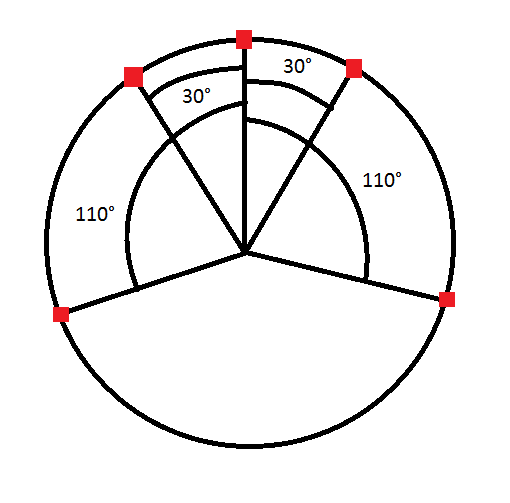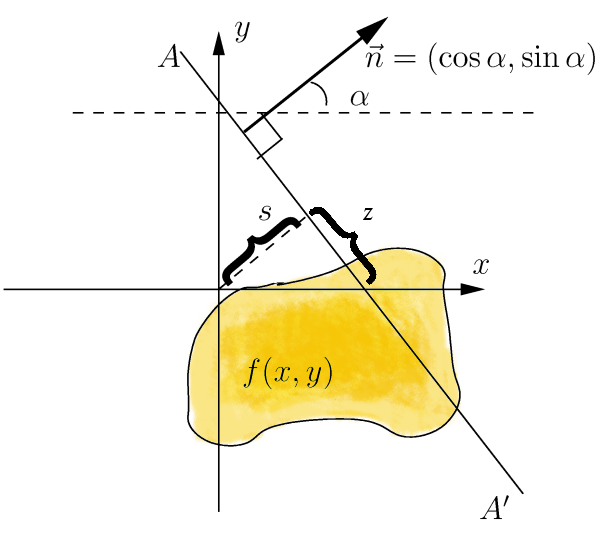|
3D Sound Reconstruction
3D sound reconstruction is the application of reconstruction techniques to 3D sound localization technology. These methods of reconstructing three-dimensional sound are used to recreate sounds to match natural environments and provide spatial cues of the sound source. They also see applications in creating 3D visualizations on a sound field to include physical aspects of sound waves including direction, pressure, and intensity. This technology is used in entertainment to reproduce a live performance through computer speakers. The technology is also used in military applications to determine location of sound sources. Reconstructing sound fields is also applicable to medical imaging to measure points in ultrasound. Techniques To reproduce robust and natural-sounding audio from a three-dimensional audio recording, sound localization and reverberation reconstruction techniques are used. These techniques process sound to reproduce the spatial cues. # The location of a sound source ... [...More Info...] [...Related Items...] OR: [Wikipedia] [Google] [Baidu] |
Signal Reconstruction
In signal processing, reconstruction usually means the determination of an original continuous signal from a sequence of equally spaced samples. This article takes a generalized abstract mathematical approach to signal sampling and reconstruction. For a more practical approach based on band-limited signals, see Whittaker–Shannon interpolation formula. General principle Let ''F'' be any sampling method, i.e. a linear map from the Hilbert space of square-integrable functions L^2 to complex space \mathbb C^n. In our example, the vector space of sampled signals \mathbb C^n is ''n''-dimensional complex space. Any proposed inverse ''R'' of ''F'' (''reconstruction formula'', in the lingo) would have to map \mathbb C^n to some subset of L^2. We could choose this subset arbitrarily, but if we're going to want a reconstruction formula ''R'' that is also a linear map, then we have to choose an ''n''-dimensional linear subspace of L^2. This fact that the dimensions have to agree is ... [...More Info...] [...Related Items...] OR: [Wikipedia] [Google] [Baidu] |
Holography
Holography is a technique that enables a wavefront to be recorded and later re-constructed. Holography is best known as a method of generating real three-dimensional images, but it also has a wide range of other applications. In principle, it is possible to make a hologram for any type of wave. A hologram is made by superimposing a second wavefront (normally called the reference beam) on the wavefront of interest, thereby generating an interference pattern which is recorded on a physical medium. When only the second wavefront illuminates the interference pattern, it is diffracted to recreate the original wavefront. Holograms can also be computer-generated by modelling the two wavefronts and adding them together digitally. The resulting digital image is then printed onto a suitable mask or film and illuminated by a suitable source to reconstruct the wavefront of interest. Overview and history The Hungarian- British physicist Dennis Gabor (in Hungarian: ''Gábor Déne ... [...More Info...] [...Related Items...] OR: [Wikipedia] [Google] [Baidu] |
Cross Section (geometry)
In geometry and science, a cross section is the non-empty intersection of a solid body in three-dimensional space with a plane, or the analog in higher-dimensional spaces. Cutting an object into slices creates many parallel cross-sections. The boundary of a cross-section in three-dimensional space that is parallel to two of the axes, that is, parallel to the plane determined by these axes, is sometimes referred to as a contour line; for example, if a plane cuts through mountains of a raised-relief map parallel to the ground, the result is a contour line in two-dimensional space showing points on the surface of the mountains of equal elevation. In technical drawing a cross-section, being a projection of an object onto a plane that intersects it, is a common tool used to depict the internal arrangement of a 3-dimensional object in two dimensions. It is traditionally crosshatched with the style of crosshatching often indicating the types of materials being used. With computed ... [...More Info...] [...Related Items...] OR: [Wikipedia] [Google] [Baidu] |
Radon Transform
In mathematics, the Radon transform is the integral transform which takes a function ''f'' defined on the plane to a function ''Rf'' defined on the (two-dimensional) space of lines in the plane, whose value at a particular line is equal to the line integral of the function over that line. The transform was introduced in 1917 by Johann Radon, who also provided a formula for the inverse transform. Radon further included formulas for the transform in three dimensions, in which the integral is taken over planes (integrating over lines is known as the X-ray transform). It was later generalized to higher-dimensional Euclidean spaces, and more broadly in the context of integral geometry. The complex analogue of the Radon transform is known as the Penrose transform. The Radon transform is widely applicable to tomography, the creation of an image from the projection data associated with cross-sectional scans of an object. Explanation If a function f represents an unknown density, then t ... [...More Info...] [...Related Items...] OR: [Wikipedia] [Google] [Baidu] |
Tomographic Reconstruction
Tomographic reconstruction is a type of multidimensional inverse problem where the challenge is to yield an estimate of a specific system from a finite number of projections. The mathematical basis for tomographic imaging was laid down by Johann Radon. A notable example of applications is the reconstruction of computed tomography (CT) where cross-sectional images of patients are obtained in non-invasive manner. Recent developments have seen the Radon transform and its inverse used for tasks related to realistic object insertion required for testing and evaluating computed tomography use in airport security. This article applies in general to reconstruction methods for all kinds of tomography, but some of the terms and physical descriptions refer directly to the reconstruction of X-ray computed tomography. Introducing formula The projection of an object, resulting from the tomographic measurement process at a given angle \theta, is made up of a set of line integrals (see F ... [...More Info...] [...Related Items...] OR: [Wikipedia] [Google] [Baidu] |
Laser Doppler Vibrometer
A laser Doppler vibrometer (LDV) is a scientific instrument that is used to make non-contact vibration measurements of a surface. The laser beam from the LDV is directed at the surface of interest, and the vibration amplitude and frequency are extracted from the Doppler shift of the reflected laser beam frequency due to the motion of the surface. The output of an LDV is generally a continuous analog voltage that is directly proportional to the target velocity component along the direction of the laser beam. Some advantages of an LDV over similar measurement devices such as an accelerometer are that the LDV can be directed at targets that are difficult to access, or that may be too small or too hot to attach a physical transducer. Also, the LDV makes the vibration measurement without mass-loading the target, which is especially important for MEMS devices. Principles of operation A vibrometer is generally a two beam laser interferometer that measures the frequency (or phase) differe ... [...More Info...] [...Related Items...] OR: [Wikipedia] [Google] [Baidu] |
Tomography
Tomography is imaging by sections or sectioning that uses any kind of penetrating wave. The method is used in radiology, archaeology, biology, atmospheric science, geophysics, oceanography, plasma physics, materials science, astrophysics, quantum information, and other areas of science. The word ''tomography'' is derived from Ancient Greek τόμος ''tomos'', "slice, section" and γράφω ''graphō'', "to write" or, in this context as well, "to describe." A device used in tomography is called a tomograph, while the image produced is a tomogram. In many cases, the production of these images is based on the mathematical procedure tomographic reconstruction, such as X-ray computed tomography technically being produced from multiple projectional radiographs. Many different reconstruction algorithms exist. Most algorithms fall into one of two categories: filtered back projection (FBP) and iterative reconstruction (IR). These procedures give inexact results: they represent a compr ... [...More Info...] [...Related Items...] OR: [Wikipedia] [Google] [Baidu] |
Flowchart Reverberation Reconstruction
A flowchart is a type of diagram that represents a workflow or process. A flowchart can also be defined as a diagrammatic representation of an algorithm, a step-by-step approach to solving a task. The flowchart shows the steps as boxes of various kinds, and their order by connecting the boxes with arrows. This diagrammatic representation illustrates a solution model to a given problem. Flowcharts are used in analyzing, designing, documenting or managing a process or program in various fields. * ''Document flowcharts'', showing controls over a document-flow through a system * ''Data flowcharts'', showing controls over a data-flow in a system * ''System flowcharts'', showing controls at a physical or resource level * ''Program flowchart'', showing the controls in a program within a system Notice that every type of flowchart focuses on some kind of control, rather than on the particular flow itself. However, there are some different classifications. For example, Andrew Veroni ... [...More Info...] [...Related Items...] OR: [Wikipedia] [Google] [Baidu] |
Head-related Transfer Function
A head-related transfer function (HRTF), also known as anatomical transfer function (ATF), is a response that characterizes how an ear receives a sound from a point in space. As sound strikes the listener, the size and shape of the head, ears, ear canal, density of the head, size and shape of nasal and oral cavities, all transform the sound and affect how it is perceived, boosting some frequencies and attenuating others. Generally speaking, the HRTF boosts frequencies from 2–5 kHz with a primary resonance of +17 dB at 2,700 Hz. But the response curve is more complex than a single bump, affects a broad frequency spectrum, and varies significantly from person to person. A pair of HRTFs for two ears can be used to synthesize a binaural sound that seems to come from a particular point in space. It is a transfer function, describing how a sound from a specific point will arrive at the ear (generally at the outer end of the auditory canal). Some consumer home entertai ... [...More Info...] [...Related Items...] OR: [Wikipedia] [Google] [Baidu] |
ITU-R
The ITU Radiocommunication Sector (ITU-R) is one of the three sectors (divisions or units) of the International Telecommunication Union (ITU) and is responsible for radio communications. Its role is to manage the international radio-frequency spectrum and satellite orbit resources and to develop standards for radiocommunication systems with the objective of ensuring the effective use of the spectrum. ITU is required, according to its constitution, to allocate spectrum and register frequency allocation, orbital positions and other parameters of satellites, “in order to avoid harmful interference between radio stations of different countries”. The international spectrum management system is therefore based on regulatory procedures for frequency coordination, notification and registration. ITU-R has a permanent secretariat, the Radiocommunication Bureau, based at the ITU HQ in Geneva, Switzerland. The electeDirector of the Bureauis Mr. Mario Maniewicz; he was first elected by t ... [...More Info...] [...Related Items...] OR: [Wikipedia] [Google] [Baidu] |
Head-related Transfer Function
A head-related transfer function (HRTF), also known as anatomical transfer function (ATF), is a response that characterizes how an ear receives a sound from a point in space. As sound strikes the listener, the size and shape of the head, ears, ear canal, density of the head, size and shape of nasal and oral cavities, all transform the sound and affect how it is perceived, boosting some frequencies and attenuating others. Generally speaking, the HRTF boosts frequencies from 2–5 kHz with a primary resonance of +17 dB at 2,700 Hz. But the response curve is more complex than a single bump, affects a broad frequency spectrum, and varies significantly from person to person. A pair of HRTFs for two ears can be used to synthesize a binaural sound that seems to come from a particular point in space. It is a transfer function, describing how a sound from a specific point will arrive at the ear (generally at the outer end of the auditory canal). Some consumer home entertai ... [...More Info...] [...Related Items...] OR: [Wikipedia] [Google] [Baidu] |






